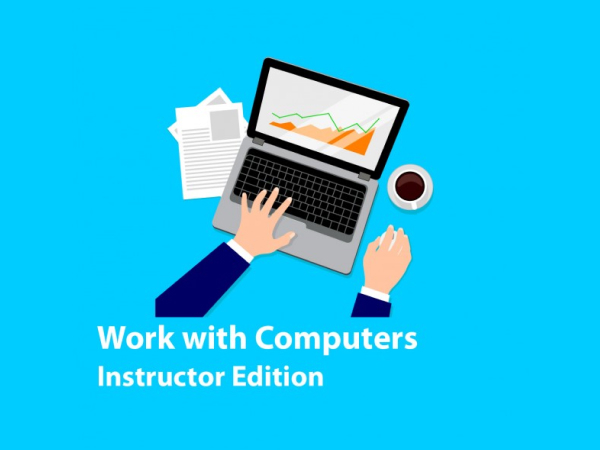
MS Digital Literacy-Work with Computers (Windows 10 & Office 2016), Instructor Edition
R
Microsoft Digital Literacy – Work with Computers (Using Windows 10 & Office 2016)
Course Specifications
Course Number: MSDIGLIT-001_rev1.0
Course Length: 1 hour 9 minutes
Course Description
This learning path will introduce you to the different types of computers, as well as their parts and functions. You will also learn the difference between operating systems and applications and their functions. Peripherals and portable storage devices will be discussed as well.
Course Content
Module 1 – Interact with a Computer
Course Length: 11 minutes | 6 units
In this module, you will explore what a computer is, the parts of a computer, and how to interact with it. There are many types of computers that are used for everyday tasks. In this lesson, we'll explore what a computer is, the parts of a computer and how to interact with a computer.
By the end of this lesson you will be able to:
- Describe the functions of a computer.
- Differentiate between computer hardware and software.
- Describe the primary parts of a computer and the use of each part.
Module 2 – Use a Computer
Course Length: 36 minutes | 11 units
In this module, you will learn about operating systems and how to use the basic functions of the Windows 10 operating system. In this lesson, you will learn how to operate a computer to perform basic tasks.
By the end of this lesson you will be able to:
- Describe the role of an operating system.
- Navigate the Windows 10 operating system.
- Organize files and folders in Windows 10.
- Use the right-click to access system features.
- Customize your operating system desktop.
Module 3 – Work with Applications
Course Length: 12 minutes | 6 units
In this module, you will learn more about apps, what types of applications you can use, and how to work with applications on your computer. Applications, also known as apps, are software programs that we can use to get things done on our computers. Every day, new applications are developed to solve new problems around the world. In this lesson, you'll learn more about apps, what types of applications you can use, and how to work with applications on your computer.
By the end of this lesson you will be able to:
- Describe the concept of an application.
- Choose the right application for your needs.
- Understand the similarities between different applications.
- Work with applications on your computer.
Module 4 – Work with Connected Devices
Course Length: 10 minutes | 5 units
In this module, you will learn how to use peripheral devices, portable storage devices, and Bluetooth devices. Computers are built with the hardware that is necessary for the computer to operate at a basic level. However, there are times when you might want to add functionality to your computer by connecting an external device. These types of devices are called peripheral devices. They add functionality to your computer by providing input functions and/or output functions. An example of an input device is a keyboard, which allows a user to type information, or a scanner, which allows a user to scan a photo into the computer. An example of an output device is a speaker that outputs sound from the computer to the user, or a monitor, which outputs visual information to the user. These types of devices are called peripheral devices. They add functionality to your computer by providing input functions and/or output functions. An example of an input device is a keyboard, which allows a user to type information, or a scanner, which allows a user to scan a photo into the computer. An example of an output device is a speaker that outputs sound from the computer to the user, or a monitor, which outputs visual information to the user.
By the end of this lesson you will be able to:
- Describe types of peripheral devices and their uses.
- Use portable storage devices.
- Connect Bluetooth devices to a computer.

.jpg)

.jfif)
.jpg)
.jpg)
.jpg)




.png)





.jfif)






.jfif)





